Trini Nadine Otego Seiler helps preserve signs from Black Lives Matter Movement
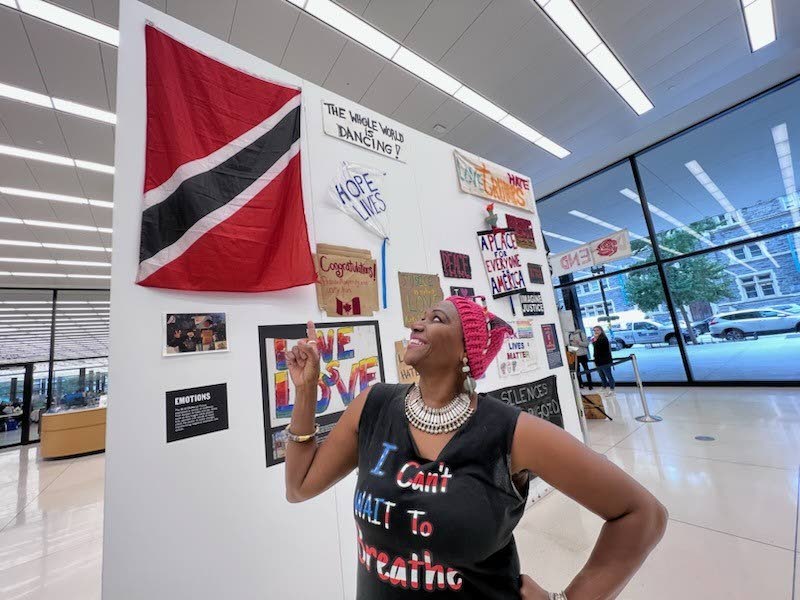
There are many things Trinidadians are known for across the world. Trinidad and Tobago-born, US-based Nadine Otego Seiler, 57, is adding another to the list.
That is because she helped to save and curate signage from the historic Black Lives Matter Memorial Fence and the Black Lives Matter Movement, which introduced a new wave of discussion about race relations in the US. Otego Seiler and fellow protester Karen Irwin worked to find a home for more than 1,000 items from the events. Irwin, 47, from New York City, helped Otego Seiler with the exhibit.
The pieces – also part of an online exhibition at the US Library of Congress website – will now be on display at the DC Public Library.
The library’s website says the DC Public Library, in collaboration with its partners, is presenting a special exhibit to highlight the Black Lives Matter Memorial Fence Artefact Collection, a digital collection comprising 1,600 images on posters, photographs, and other items.
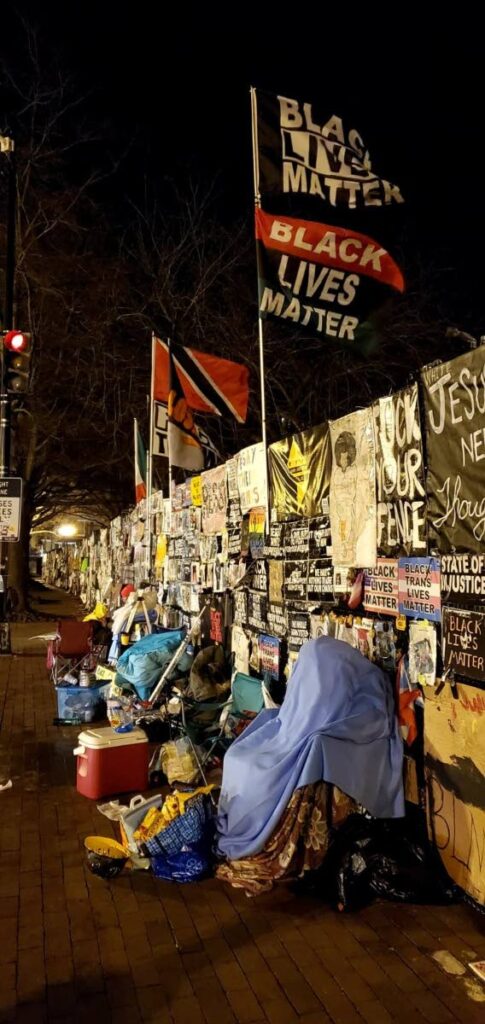
A visit to the library's website shows the pieces – some of which read: Abolish Police; We Keep Us Safe; Abolition is Liberation; Black Lives Matter – and pictures of victims of hate crimes and police brutality in the US, such as Ahmaud Arbery.
Arbery was 25-years-old when he murdered while jogging in Glynn County, Georgia, in a racially-motivated crime.
The exhibition runs from October 28-February 24, and is on display at the Martin Luther King Jr Memorial Library.
“Special thanks to Nadine Seiler and Karen Irwin, curators of the Black Lives Matter Memorial Fence, for the loan and installation of original material from the fence,” the website said.
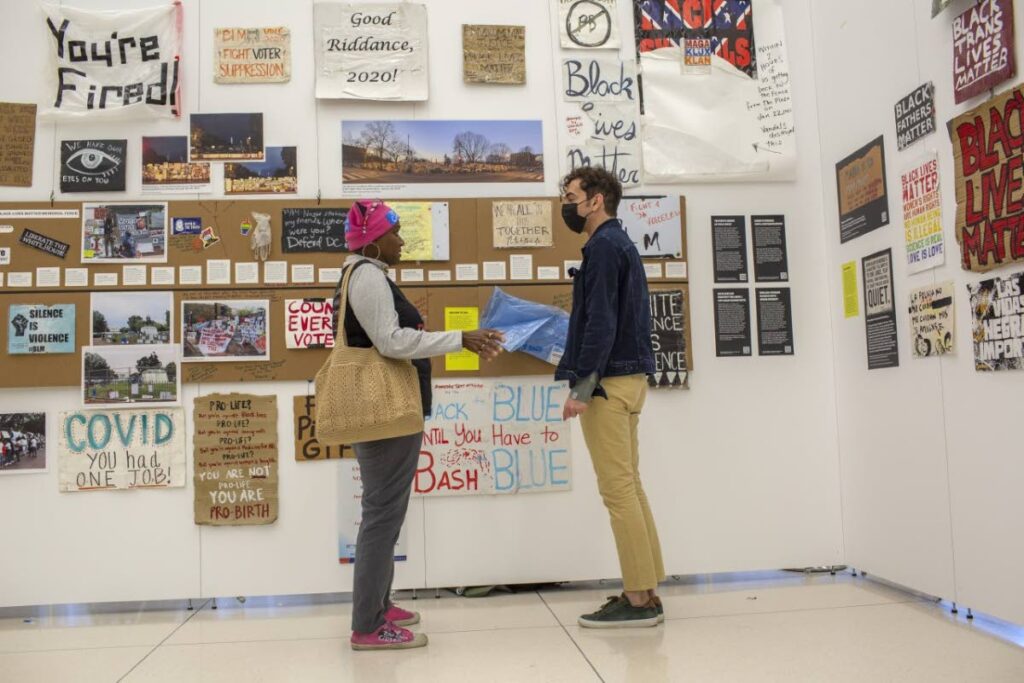
The pieces were made by individuals, groups and artists, Otego Seiler said.
"The majority of protest art were done on cardboard which people had in hand.
Otego Seiler’s work drew a lot of media attention in the US.
She grew up at Back Street, Tunapuna, and attended St Augustine Senior Comprehensive, then left TT in 1987.
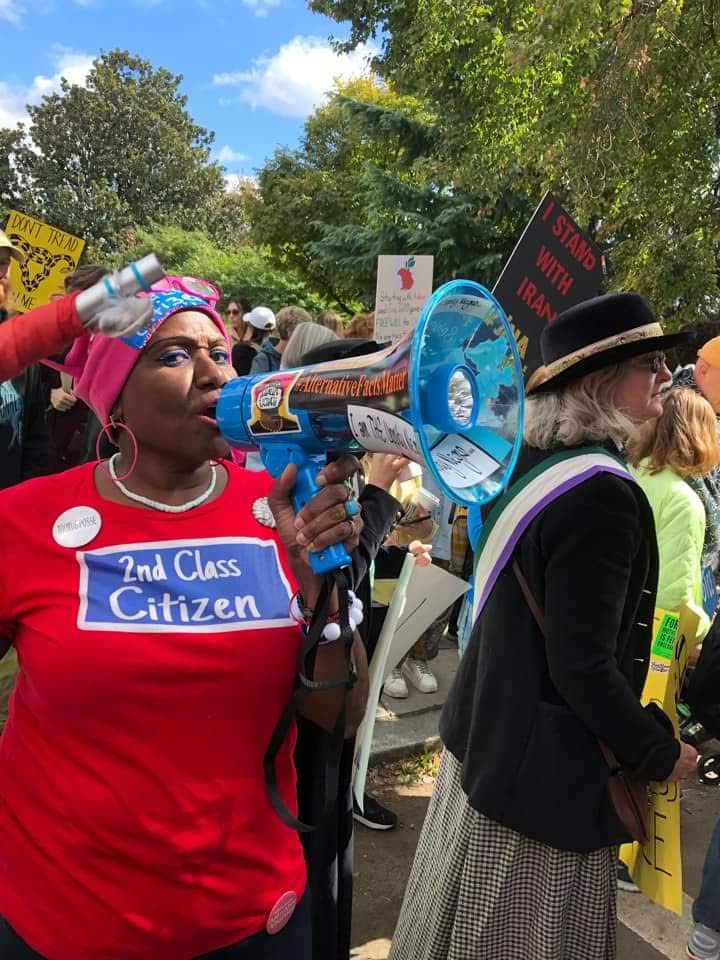
When she first moved to the US, like many Trinidadians and Caribbean nationals, went on a visa and overstayed.
“When I came, for the first three or four years, I could not speak, because I was an ‘illegal immigrant,’” she said in a phone interview. “I had to be in the shadows and not say anything.
"I got my papers straightened out in the first five years I was here, which is much quicker than a lot of people. Once I got my foot in and I was able to go to school, I started working and found my voice, I knew there were so many people in this country who were just like me for the first five years.”
So when given an opportunity to make her voice count, Otego Seiler did just that. She has been protesting since 2017, she said. She is also a home organiser – someone who helps people organise the clutter in their homes.
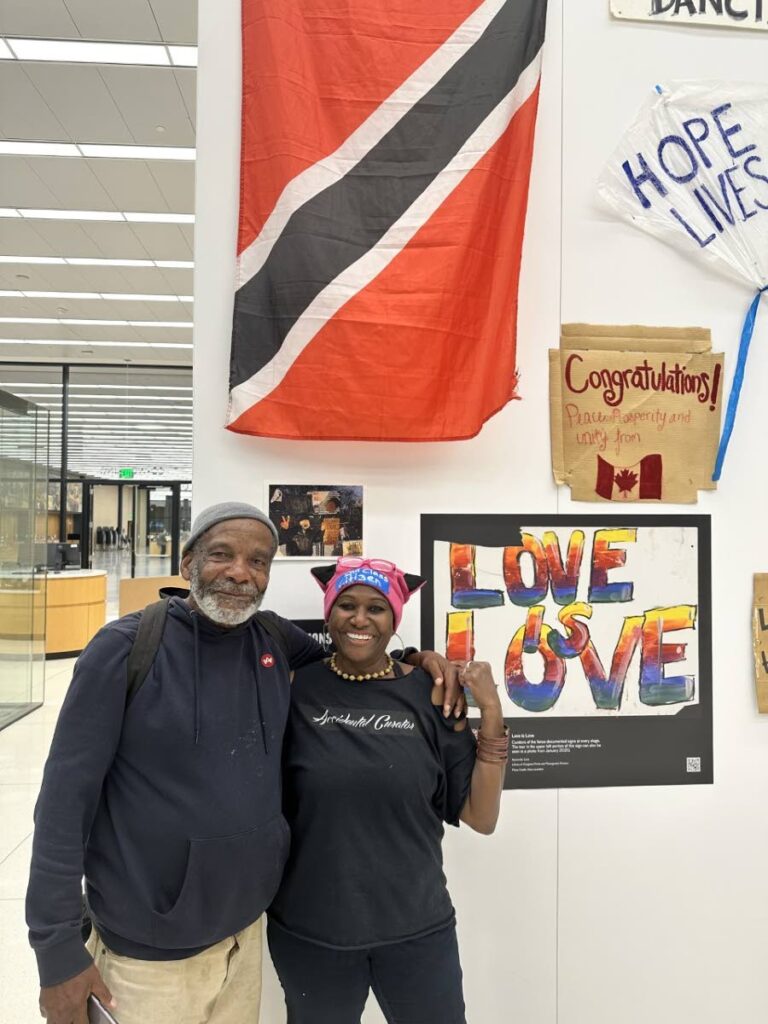
Otego Seiler was a part of the 2017 Women’s March, which saw many people mobilise the day after US president Donald Trump’s inauguration.
She continued lending her voice to similar action after that. Her constant activism earned her the moniker Warrior Goddess of the Resistance in 2018.
When she began preserving and protecting the fence’s signage, art was not on her mind. She simply wanted to ensure the messages that stood against anti-blackness in the US, and those paying respect to those who lost their lives to police brutality, were not removed.
The covid19 pandemic restricted Otego Seiler’s work, so having a lot of time on her hands allowed her to be at the 2020 Black Lives Matter protests 24/7.
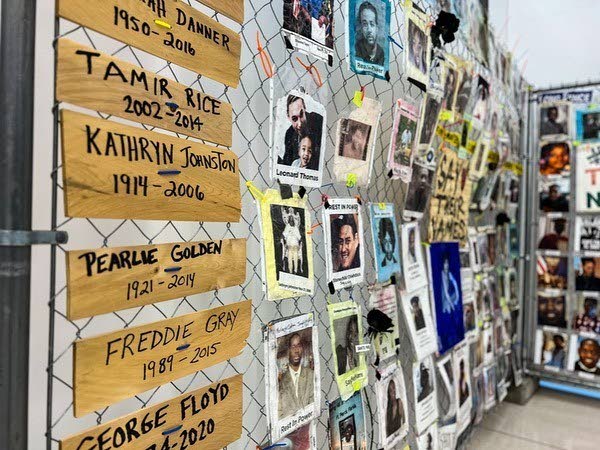
On May 25, 2020 46-year-old George Floyd was murdered in Minneapolis by Derek Chauvin, 44, a white police officer. Chauvin knelt on Floyd's neck for over nine minutes while he was handcuffed and face down on the street. Floyd was arrested on suspicion of using a counterfeit US $20 bill.
Floyd's death sparked the Black Lives Matter movement. A fence was erected on June 2, 2020 around the White House and Lafayette Park in the face of the growing protests over Floyd’s murder. Otego Seiler said the fence became a space where the thousands of people visiting would put all their protest signs. This first fence was removed on June 11, and the signs there were relocated. Some were acquired by museums and others ended up in people’s homes.
Another fence was erected when Black Lives Matter protesters tried to topple the Andrew Jackson statue in Lafayette Square, which falls within Lafayette Park.
Jackson was the US president from 1829-1837 and has been criticised for his treatment of Native Americans.
That fence went up on June 24, 2020 and signs on it were removed on January 30, 2021. During that eight-month period, Otego Seiler and others guarded and protected the messages on the fence. Doing so “just became a thing” for her.
“We decided to stay because this fence represented people’s voices being silenced. Karen and I said we were going to stay there until the fence came down.”
While Otego Seiler and others were there, anti- Black Lives Matter protesters would try to destroy the signs, and that is why they stayed to protect them, she said.
She had no idea that doing this would lead to the items being curated in a national museum.
“Up to December, I personally had no vision of it being something past the fence coming down. It was just a matter of protecting it, protecting the voices of the people, mourning the dead and wanting some respect for people murdered by the police and who did not get justice in our system.”
While at the fence, Otego Seiler and others met Aliza Leventhal, head of the technical services section, prints and photographs division, at the Library of Congress.
Otego Seiler said she asked them what would be done with the pieces once they were removed. Some museums and other organisations were contacted but said they did not want them.
“Because of covid19, no one was coming into the field, and she guided us and told us what the best option was, which was to take everything down, in a curated manner, and put it in storage.”
Otego Seiler said the fence itself was the subject of a lot of media attention and the Washington Post did a story about the removal of the signs. Someone saw that article, contacted Leventhal and gave her information about a library in Baltimore that had a scanner that could scan the signs. The library scanned the signs for free, she said.
“All of the items we were able to scan – which is over 1,000 pieces – are now online where anyone can see. So anyone ten, 15 or 20 years from now, can go online and see all of the saved items. Because of that, DC Public Library became involved and decided to exhibit part of the collection at its main branch in Washington, DC, until mid-February 2023.”
The TT flag is also featured in the collection, as it was among those which appeared on the fence.
Although she had no other intention but protecting the pieces, she’s glad they are now part of the global historical record.
For Otego Seiler, her work is about fighting injustice and speaking up for people who can’t speak for themselves.
One day, she'd like to start a foundation and have the items exhibited in different parts of the US and the world.

Comments
"Trini Nadine Otego Seiler helps preserve signs from Black Lives Matter Movement"